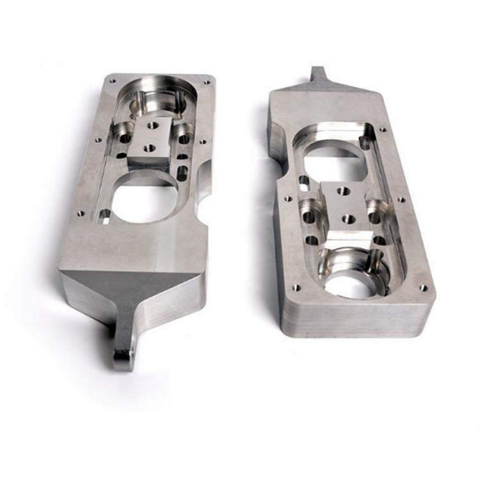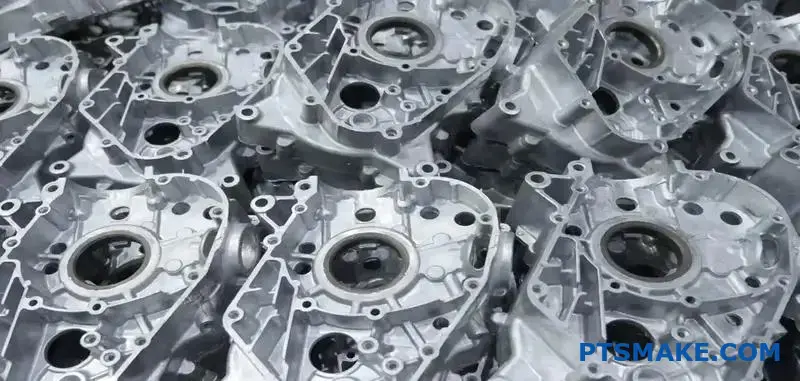Understanding Aluminum Casting: A Comprehensive Guide to Its Applications and benefits
Aluminum casting is a procedure that changes liquified aluminum right into strong forms via different methods. This technique offers remarkable benefits, such as lightweight strength and deterioration resistance. It finds applications in many sectors, reflecting its flexibility. Comprehending the ins and outs of aluminum casting and its best practices can greatly affect the quality of the last product. Discovering these components discloses truth possibility of aluminum casting in modern manufacturing.
The Basics of Aluminum Casting
Aluminum casting is a production process that changes liquified aluminum right into strong objects with numerous methods. This process starts with home heating aluminum up until it reaches its melting factor, enabling it to move into molds. There are several approaches of aluminum casting, consisting of sand casting, pass away casting, and investment casting, each suitable for various applications based upon design intricacy and production volume.
In sand casting, molds are created using sand, providing flexibility for detailed forms. Die casting entails compeling liquified aluminum right into a steel mold under high stress, causing accurate and repeatable components. Investment casting, on the other hand, uses a wax pattern that is coated with ceramic to develop comprehensive elements.
After the aluminum cools and solidifies, the molds are gotten rid of, revealing the completed products. This casting procedure is important in numerous sectors, including vehicle, aerospace, and consumer products, enabling the creation of light-weight and resilient elements.
Advantages of Aluminum Casting
One of the key advantages of aluminum casting exists in its capacity to create light-weight yet solid parts. This distinct combination makes aluminum an excellent choice for various markets, consisting of automotive, aerospace, and durable goods. The intrinsic deterioration resistance of aluminum likewise boosts the durability of the cast parts, lengthening their life-span and minimizing the need for maintenance.
In addition, aluminum casting enables intricate geometries and elaborate layouts, which can lead to a lot more efficient and cosmetically pleasing items. The product's outstanding thermal and electrical conductivity better increases its applications, specifically in electronic devices and warm exchangers.
Moreover, aluminum recycling is very reliable, contributing to environmental sustainability and lowering manufacturing expenses. Generally, the advantages of aluminum casting placement it as a practical and flexible service for suppliers seeking to maximize performance while lessening weight and resource usage.
Usual Techniques of Aluminum Casting
While different methods exist for aluminum casting, each approach uses distinctive benefits customized to details applications. One of the most typical approaches consist of sand casting, die casting, and investment casting.
Sand casting, recognized for its adaptability, utilizes sand molds to create intricate forms and is suitable for both small and large production runs. Pass away casting, on the various other hand, employs high-pressure injection of molten aluminum into steel molds, causing smooth surfaces and exact measurements, making it suitable for mass manufacturing.
Financial investment casting, usually referred to as lost-wax casting, involves creating a wax pattern covered with a ceramic shell. Precision aluminum casting. Once the wax is disappeared, molten aluminum is put into the cavity, generating detailed styles and superb surface area coatings
Each of these techniques plays an important function in the aluminum casting landscape, using details benefits that deal with differing production requirements and production scales.
Applications Throughout Industries
The adaptability of aluminum casting methods permits a wide variety of applications across numerous markets. In the automobile sector, light-weight aluminum parts improve gas effectiveness basics and efficiency, contributing to the expanding need for electric vehicles. Aerospace sectors use aluminum spreadings for their strength-to-weight proportion, making sure safety and security and sturdiness in aircraft production.
The building market gain from aluminum casting via architectural elements and structural components that withstand rust and require minimal maintenance. Additionally, consumer electronic devices manufacturers use aluminum spreadings for frameworks and real estates, stabilizing aesthetic appeals with capability.
In the aquatic sector, aluminum spreadings are preferred for watercrafts and marine devices because of their resistance to saltwater rust. In addition, the clinical area uses aluminum spreadings in medical instruments and equipment, ensuring accuracy and dependability. In general, aluminum casting's flexibility allows it to satisfy the diverse needs of numerous sectors, making it an important production procedure.
Best Practices for Effective Aluminum Casting
Successful aluminum casting depends on a mix of cautious preparation, precise execution, and extensive quality control. Selecting top notch aluminum alloys is crucial, as they directly influence the casting's buildings and performance. Proper mold and mildew layout is crucial, ensuring that it suits thermal tightening and blog here lessens problems.
During the melting procedure, avoiding and preserving the proper temperature level contamination are essential to accomplishing a consistent alloy. Furthermore, utilizing efficient pouring methods can boost the filling of molds, decreasing the likelihood of air pockets or inclusions.
Post-casting, executing complete assessment methods, such as visual analyses and non-destructive testing, assures that defects are identified early. Moreover, employing extensive quality assurance steps throughout the procedure assists maintain uniformity and reliability in the final items. By sticking to these ideal methods, manufacturers can significantly improve the success and performance of their aluminum casting operations.
Often Asked Questions
What Security Steps Should Be Taken Throughout Aluminum Casting?

How Can Problems in Aluminum Castings Be Minimized?
Flaws in aluminum castings can be decreased via mindful mold layout, appropriate temperature control, guaranteeing tidy metal, making use of proper pouring techniques, and conducting detailed inspections to determine and deal with issues prior to completing the casting process.

What Is the Environmental Impact of Aluminum Casting?
The ecological influence of aluminum casting includes energy-intensive procedures, greenhouse gas discharges, and resource removal concerns. Developments in recycling and sustainable practices can mitigate these results, promoting a more environmentally friendly approach to aluminum manufacturing.
Can Aluminum Casting Be Reused?
Yes, aluminum casting can be recycled effectively. The recycling process calls for substantially less power contrasted to main aluminum manufacturing, making it an eco-friendly option that contributes to source conservation and minimized carbon emissions.
What Are the Prices Related To Aluminum Casting Processes?
Expenses linked with aluminum casting processes consist of material costs, labor, devices upkeep, energy consumption, and mold and mildew construction. These aspects can differ substantially based upon production scale, intricacy of designs, and specific production techniques employed.
Aluminum casting is a process that transforms liquified aluminum into solid types through different methods. Aluminum casting is a manufacturing procedure that changes molten aluminum into strong things through different methods. While numerous methods exist for aluminum casting, each approach provides distinctive benefits customized to specific applications. The ecological effect of aluminum casting includes energy-intensive processes, greenhouse gas emissions, and resource extraction issues. Prices linked with aluminum casting procedures consist of material expenditures, labor, devices upkeep, energy usage, and mold construction.